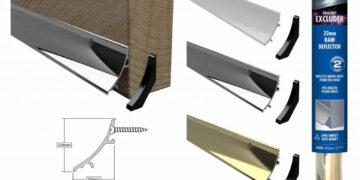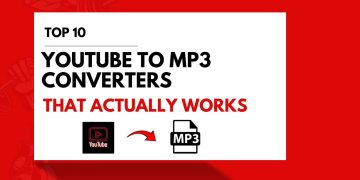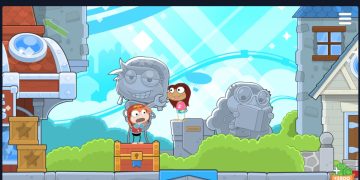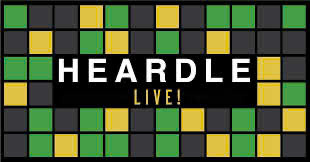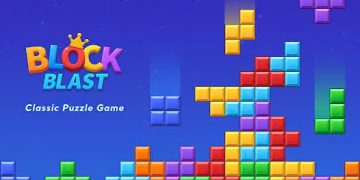Have you ever visited a website that looked great but was difficult to navigate? Chances are, you didn’t stay long. That’s because website structure plays a crucial role in Conversion Rate Optimization (CRO). If users can’t find what they’re looking for quickly, they’ll leave—resulting in lost leads and sales.
A well-structured website not only improves user experience (UX) but also boosts conversions. Whether you’re an online retailer, a service provider, or a blogger, structuring your website the right way can make all the difference. But what’s the right approach? Let’s dive into the details!
What Is Website Structure and Why Does It Matter for CRO?
Website structure refers to the way your site’s pages are organized and linked. Think of it as the foundation of your digital presence.
A good structure ensures that visitors can easily navigate your site, understand your content, and take the desired actions—whether it’s signing up, making a purchase, or filling out a contact form.
A well-structured website impacts CRO in several ways:
- Enhances User Experience (UX): Users can easily find what they need without frustration.
- Improves Site Navigation: A clear structure guides visitors smoothly through your content.
- Boosts SEO Rankings: Search engines favor well-structured sites, making them more visible.
- Encourages Engagement: Users stay longer, increasing the chances of conversion.
- Reduces Bounce Rate: When users find what they need quickly, they are less likely to leave.
Now, let’s explore the key elements of an effective website structure.
Key Elements of a High-Converting Website Structure
A website’s structure isn’t just about aesthetics—it should be functional and user-friendly. Here are some essential components that contribute to better CRO:
1. Clear and Logical Navigation
Your navigation menu should be simple and intuitive. Visitors should instantly understand where to go. Consider these best practices:
- Keep the main menu limited to essential categories.
- Use descriptive labels (e.g., “About Us” instead of “Learn More”).
- Implement a search bar for quick access to information.
- Ensure all important pages are accessible within three clicks.
2. Organized URL Structure
SEO-friendly URLs not only help search engines understand your site but also improve user experience. Keep URLs short, meaningful, and structured logically. For example: ✅ Good: yourwebsite.com/services/web-design ❌ Bad: yourwebsite.com/p?=123xyz
3. Effective Internal Linking
Internal links help users discover more relevant content and guide them toward conversion pages. Best practices include:
- Linking related pages naturally within content.
- Using anchor texts that clearly describe the linked page.
- Avoiding excessive links that might confuse users.
4. Mobile-Friendly Design
With mobile traffic surpassing desktop usage, a responsive design is essential. Ensure your website structure adapts well to different screen sizes. Mobile-friendly websites reduce friction and encourage conversions.
5. Fast Loading Speed
No one likes a slow website. Studies show that a one-second delay in page load time can reduce conversions by up to 7%. Optimize images, use caching, and minimize unnecessary scripts to improve speed.
6. Clear Call-to-Action (CTA) Placement
Your website structure should naturally lead visitors to your CTA buttons. Place them strategically:
- Above the fold (visible without scrolling).
- At the end of blog posts and landing pages.
- In contrasting colors to make them stand out.
Choosing the Right Approach for Your Website Structure
Now that we understand the importance of website structure, let’s explore how to choose the right approach. The best structure depends on your business type, audience, and long-term goals.
Here are three common approaches:
1. Hierarchical Structure (Best for Large Websites)
A hierarchical or tree-like structure is ideal for eCommerce sites, corporate websites, and content-heavy platforms. It organizes pages into categories and subcategories, making navigation seamless.
- Example: Home > Products > Electronics > Smartphones
- Works best for: Large-scale businesses, eCommerce stores, and educational sites.
2. Flat Structure (Best for Simplicity and Speed)
A flat structure keeps all main pages easily accessible without too many subcategories. This approach improves loading speed and usability.
- Example: Home > Services, About, Contact
- Works best for: Small businesses, portfolio websites, and landing pages.
3. Sequential Structure (Best for Guided Journeys)
If your goal is to lead visitors through a specific journey (such as signing up for a service), a sequential structure works best. It ensures users follow a logical path.
- Example: Home > About Us > Features > Pricing > Sign Up
- Works best for: SaaS companies, online courses, and sales funnels.
Common Mistakes That Hurt CRO and How to Avoid Them
Even with a well-planned structure, some mistakes can hinder conversions. Here’s what to avoid:
- Overcomplicated Navigation – Keep it simple and don’t overload menus.
- Broken Links and Dead Ends – Regularly check for and fix broken links.
- Slow Load Times – Optimize images and reduce unnecessary elements.
- Lack of Mobile Optimization – Ensure your website looks great on all devices.
- Unclear CTAs – Use strong, action-driven words like “Get Started” or “Download Now.”
The Role of Website Platforms in CRO
The choice between CMS vs. Custom Websites also affects how well your structure supports conversions. CMS platforms like WordPress offer flexibility, built-in SEO tools, and user-friendly design options.
Custom websites, on the other hand, provide greater control over site structure and performance. Choosing the right platform depends on your business goals, technical expertise, and budget.
Conclusion
Your website structure is more than just a design element—it directly impacts CRO, user experience, and SEO. By ensuring clear navigation, fast load times, mobile responsiveness, and well-placed CTAs, you can create a website that not only attracts visitors but also converts them into customers.
If you’re planning a website revamp or building a new one, consider your structure carefully. The right approach can mean the difference between a visitor leaving or becoming a loyal customer.













